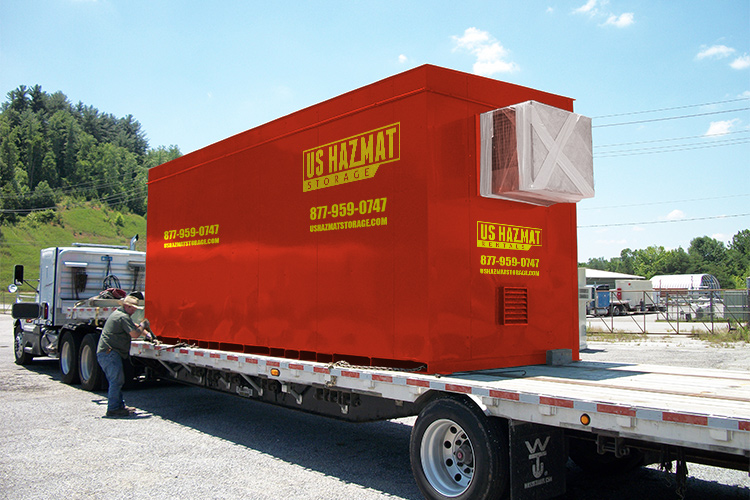Segregated chemical storage can mitigate potential safety hazards when handling hazardous materials. Complex industrial applications and factory processes often require different types of chemicals. Many of these chemicals originate from differing classifications, which are based on several distinct properties, including flammability and toxicity. Failure to abide by chemical storage guidelines, as well as common sense, can result in inadvertent explosions and serious injury to property and even employees. By investing in steel rated chemical protection from U.S. Hazmat Storage, you can ensure compliance in a well-managed and organized workspace.
The Keys to Proper Inventory

Dangerous chemicals should be stored with other compatible materials in a well-ventilated and climate controlled facility. Paints, for example, should be stored in an optimal temperature range to prevent coagulation while protecting chemical consistency. Avoid storing chemical containers above eye-level and away from exits and points of entrance. Palletized storage options can also free up additional space in your chemical storage locker by preventing the accumulation of dangerous containers in aisleways.
The Perils of Mislabeling

Project managers should avoid the temptation of storing chemicals in alphabetical order that are not in the same hazard class. While such processes may create an easy system for allocation and retrieval, the abject dangers of storing incompatible materials together can have disastrous consequences. Each U.S. Hazmat Storage locker comes equipped with a steel sump containment system that sits beneath a grated floor. Should a spill occur, the subfloor containment system will collect the substance until it can be safely removed. As a result, consideration should be given as to what chemicals could potentially come to rest in the sump. Separate or compartmentalized storage of incompatible materials will be for naught if these chemicals should spill and be allowed to mix in the below floor sump system.
Understanding the Importance of Proper Segregated Chemical Storage

Some chemicals literally mix together like fire and gasoline. The results are invariably catastrophic. Concentrated acids, for example, should also be stored in a separate storage cabinet. Likewise, acids and bases should be kept far away from one another. Some types of flammable and non-flammable materials can be stored together, as in the case with flammable and non-flammable solvents. Regardless of your storage need, a qualified and experienced U.S. Hazmat Storage building advisor can assess your needs and present to you the most affordable and logical storage solution.


